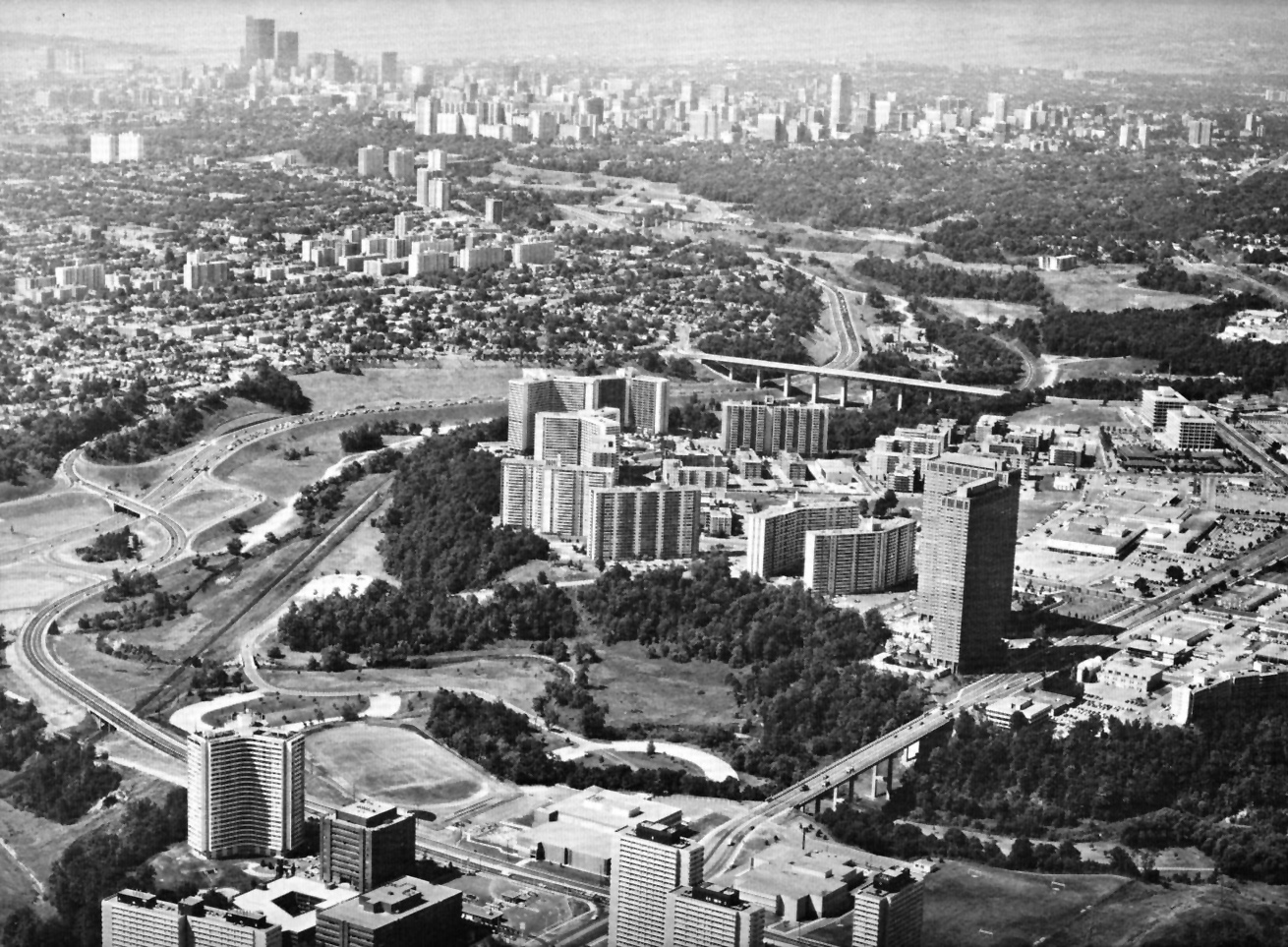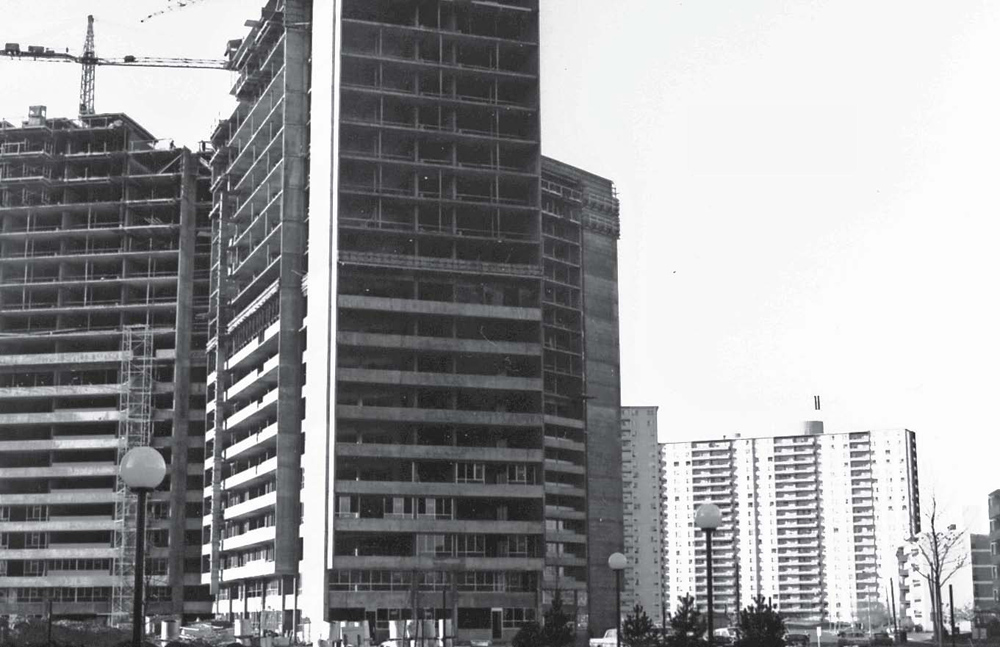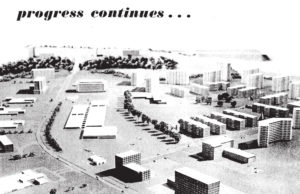Thorncliffe Park from the air, looking downtown, early 1970’s
Thorncliffe Park was a bold 1950s plan by the Town of Leaside to redevelop a former racetrack overlooking the Don River. Conceived in 1955 it was proposed to be the first apartment neighbourhood in Canada. Though breaking ground slightly after neighbouring Flemingdon Park, it was recognized internationally as an ambitious attempt to better organize population growth in response to the sprawl found in Toronto’s outer boroughs.
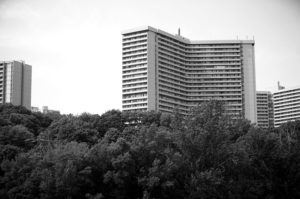
Thorncliffe Park as seen from the Leaside Bridge
Part of the goal of Thorncliffe Park was to promote a European approach to apartment living, as equally viable for the young, the elderly and families. To accomplish this, apartments were arranged with generous spaces and two, three and even four bedroom configurations – wishing to provide genuine family sized units and enticing tenants for the long term.
Thorncliffe Park under construction, early 1960s
The apartment towers themselves were the peak of modernity, for the first time offering panoramic views of the city, underground parking, indoor pools and other amenities unthinkable before the War. In something of a ‘Jetsons’ aesthetic, Thorncliffe’s modern towers were a symbol of a prosperous and confident nation after the war. The luxury Leaside Towers of 1970, at 130m remained the tallest buildings north of Bloor Street for 37 years. The neighbourhood was also remarkable for the efficiency in which it was constructed, resulting in publications in prominent construction journals worldwide.
Promotional model for Thorncliffe Park, late 1950s
The neighbourhood was based on a community master plan. The low, mid and high-rise apartment buildings in the neighbourhood were organized around a central park, elementary school, shopping centre and community facilities, with apartments located along the escarpment edge. Overlea Boulevard, which is Thorncliffe’s main commercial street, connects the neighbourhood to the rest of Toronto via bridges to the north and south.
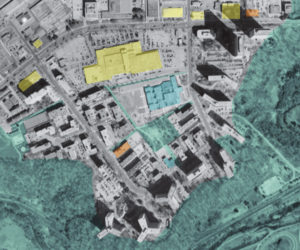
Uses within Thorncliffe Park: natural space and park (green), school and community (blue), religious (orange) and commercial (yellow)
Today the area one of the City’s most prominent immigrant reception zones. It is home to Canada’s largest Islamic community and is one of North America’s most diverse neighbourhoods, with a vibrancy and street life usually found in the central city.Yet the area is not without its problems. A lack of investment, a neglected and disconnected public realm and a need for further community specific programming require thoughtful solutions. Already containing many of the ingredients which make great communities work, this culturally unique area of some 15 000 could easily become a genuinely sustainable and complete community.
And changes are already on their way. Located along the proposed Don Mills RT line, it will benefit considerably from the new Transit City Plan. Planned as a self-sufficient New Town, Thorncliffe Park may indeed become the model of a high-density suburban community in the 21st Century context.
This article first appeared in Novæ Res Urbis (NRU). ERA is contributing articles to NRU on a weekly basis about the Toronto Tower Renewal project.
